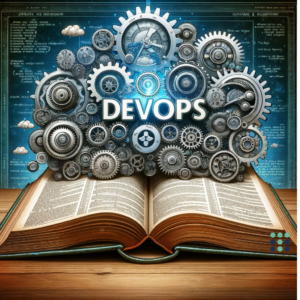Agile+DevOps – Extending the pipeline with DAVSC
Take the DAVSC Course
Okay, maybe you have heard about, or started into the journey of DevOps, are your customers happier, your stakeholders delighted? I have some theories why this is not always the case and why for over five years I have spoken to folks at IBM, Redhat, Microsoft (my students and clients) and written about focusing on value at velocity. This seems to get a fervent nod, a yes and then turn the discussion to a CI/CD pipeline. In my humble opinion even when I see words like “culture” or “mindset” they are missing what I call the DevOps loop, it’s not just been about a continuous integration, continuous deployment (CI/CD) pipeline, that is honestly, a much smaller part.
Early in our book Navigating DevOps Through Waterfalls (NDTW), on page 24 we mention pipelines, and on page 32 value stream management. Agents 13 & I believe value streams were so important to the DevOps mindset that we bring it up many times in our book. Back to my hypothesis, DevOps is not just about CI/CD (pipelines), its much more, and we need to extend DevOps right to the business and customer. What I am calling the DevOps loop or racetrack and I have listed some key points below regarding my hypothesis from data, conversations and experience, listed numerically:
- DevOps pipelines are automated (when automate-able) a combination values streams, based on views and view points from IT, development and through the business lens, operational. This is quite powerful what Agent 13 calls “UBER value stream” and I excitedly agree!
- DevOps pipelines should represent a focus on the value that begins and ends with the customer in mind.
- DevOps pipelines can bring both internal values to the business and IT, while also bringing external value to your customer (end-user) and other stakeholders.
- When DevOps pipelines are extended to the business, are applied to value stream management using the Disciplined Agile Flex and Value Stream Consultant approach to promises principles and guidelines; these DevOps pipelines will accelerate the time to value in the hands of the customer.
- Realize the DA goal of delighting our customers, and it’s not just about delivering the value of software anymore!
Regarding these points, especially number 1, Carmen Deardo confirmed my theories in the article: “Value Stream Management: Treat Your Pipeline as Your Most Important Product”. Carmen mentions some very important points:
- Value Stream Management is essential to remain relevant and competitive
- A DevOps pipeline, even if focused on Product is typically broken because it usually focuses on CI/CD [source code management, build, deploy, quality management and service management] (as we describe this in a practical sense in our book).
- This means there is a disconnect with the business and likely other parts of IT.
Therefore extending our pipeline and viewing the DevOps pipeline as part of our value stream, while managing, nurturing, and improving is pivotal.
In fact, DevOps is no longer an option for any business or government for that matter, customers want solutions that bring value to them whether the solution is software or service. In his foreword for our book NDTW, Scott Ambler, VP & Chief Scientist at PMI says that “DevOps is table stakes for any organization”.
Great, now we have established three things:
- DevOps is not an option, you need to implement a culture of DevOps and start the journey
- DevOps must be connected to your business and across IT (a DA Value Stream or what I call Enterprise DevOps).
- This means DevOps is not just about Continuous Integration, Continuous Delivery (CI/CD in DevOps speak), as Disciplined Agile & Disciplined DevOps has stated for many years.

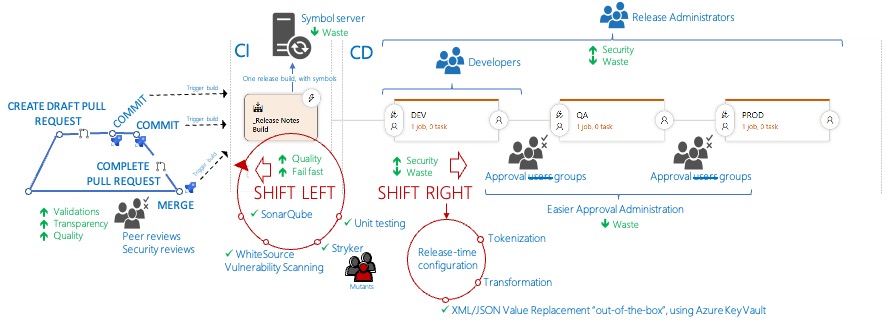
Okay with the two pictures above we are busy focusing on building, testing, automating where possible the integration and releasing in deployment software to our stakeholders and or the end-user. This is good, however, it’s not necessarily focused on value to the end-user! Enter the race track below (looping our pipeline). There is a lot here and for good reason, DevOps is not simple, extending our pipeline is not simple either. Starting with our customers at the top of the diagram we see a flow of potential value “needs” coming from both internal and external stakeholders (customers for example). Progressing along the track in we touch DA Process Blades and Business Capabilities. Producing MBIs through the implementation, that is program management, delivery, release and IT Operations (they are missing the word DevOps here, but we will let that rest for the time being), we see in-part the engine for constructing and releasing value. There is a lot on this slide and I know it’s still being baked by Al Shalloway and his team at PMI.
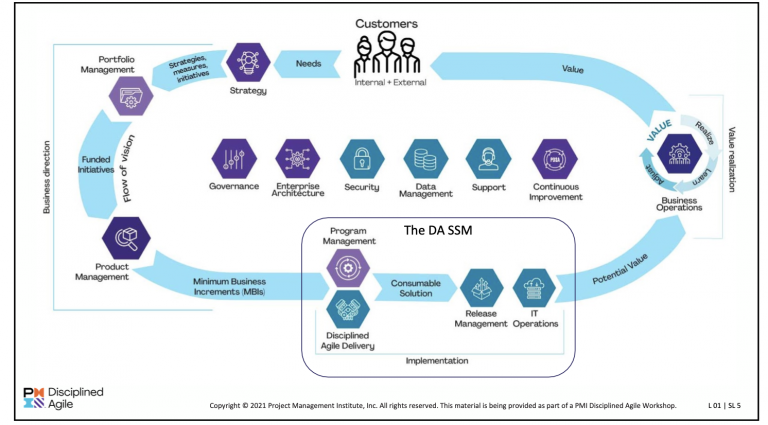
Awesome, so now we are connecting the business and not just some of the IT capabilities in a CI/CD pipeline. Al Shalloway calls a value stream “the set of actions that takes place to add value to a customer from the initial request through the realization of value by the customer”. Further, PMI DA says “A value stream always begins and ends with a customer—although that customer can be internal or external.”
The DAVSC certification provides foundation for connecting DevOps to the rest of your organization, it is the glue for Disciplined DevOps (Disciplined Agile Value Stream Layer) to function effectively with the Disciplined Agile Enterprise.
What we are getting at here, is what Al calls an effective organization through, an “Idealized Value Stream”, to make this happen in-part, we need to extend our reach and loop our pipelines enabling them in value streams called Development (product or service development – IT ), Operational ( product usage or service delivery – the Business) and Enabling (work that enables the operational value streams to be used). We can visualize this in the pictures below:
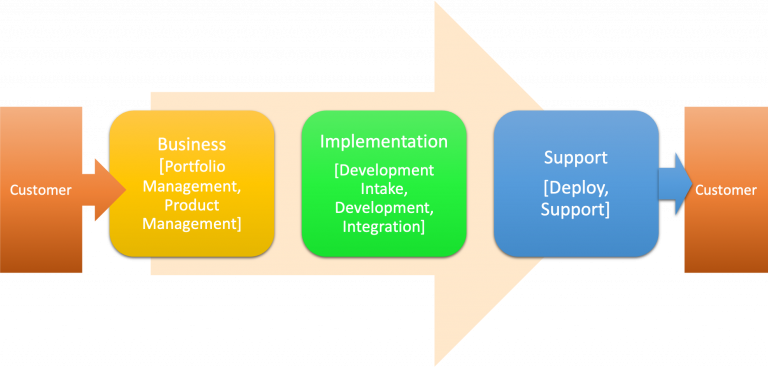
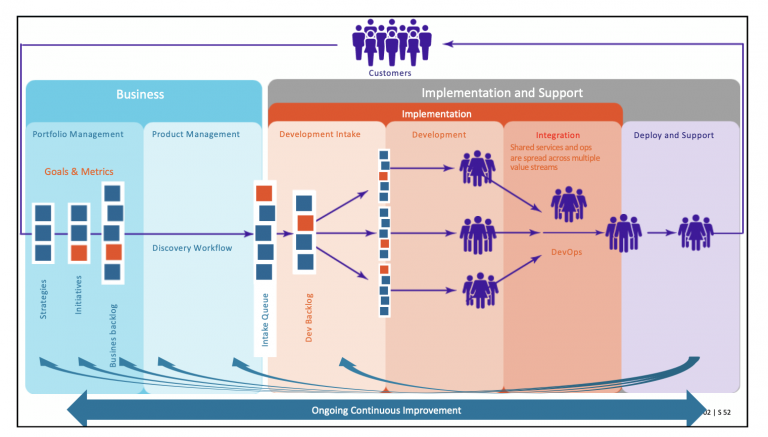
This is a brief blog about extending and looping your pipelines to focus on value at a velocity which is our tagline here at Tactec for over four years. We have barely scratched the surface on this subject, and don’t just take my word for it, Forrester even referred to what we call Agile+ in an article called Value Stream Management Tools Unlock Agile-Plus-DevOps (in this case Agile+DevOps). You can read more about the DAVSC program at our DAVSC course May 10, 2021 and realizing value with DevOps over the next few months as I blog in more detail about this and our upcoming DAVSC course available soon. Stay tuned or sign up for our newsletter on the bottom of our home page, to hear more about focusing on value at velocity with PMI DAVSC & what we call Agile+. Please comment below and let me know what you think?




